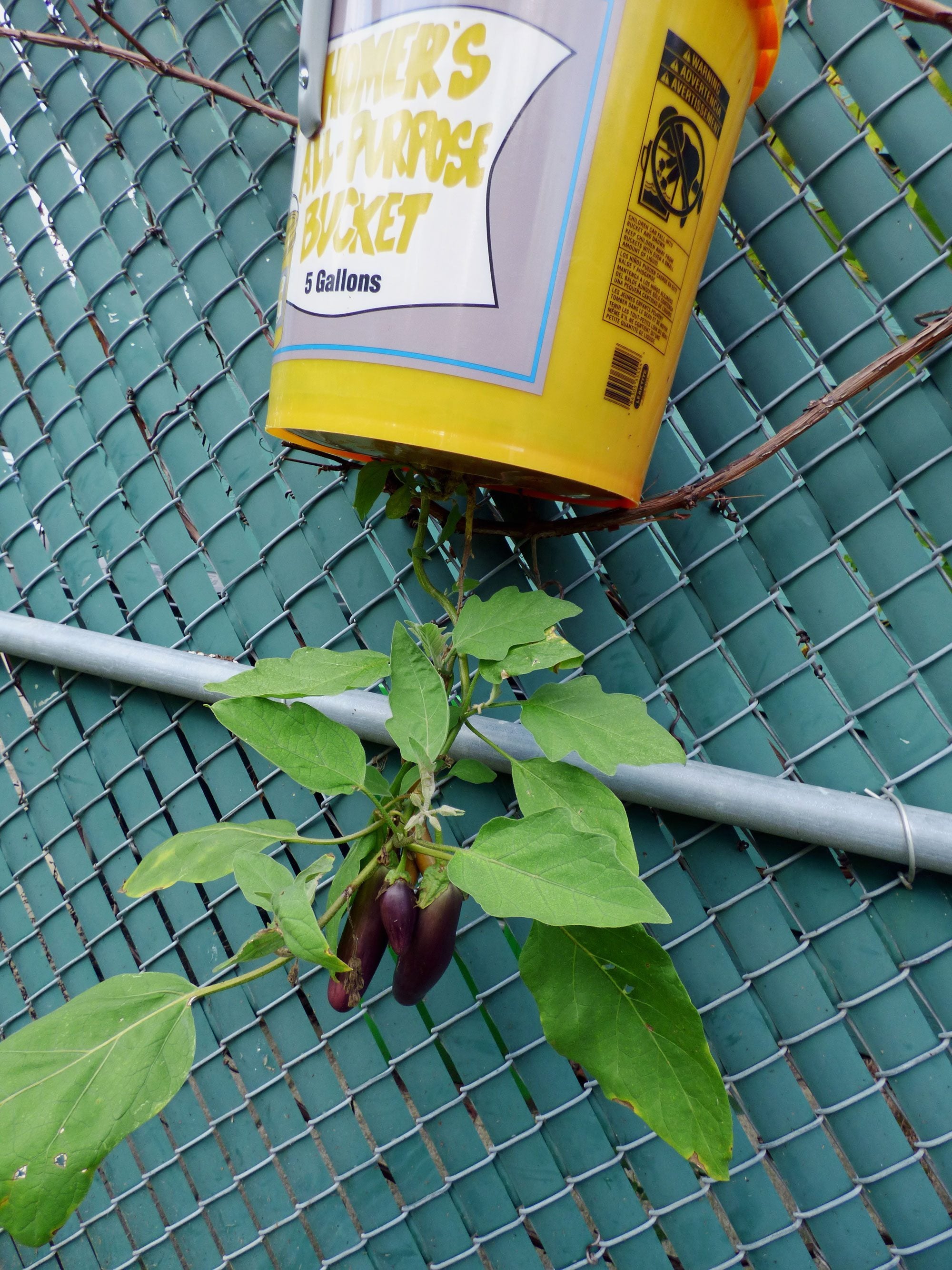Hanging Eggplants: Can You Grow An Eggplant Upside Down

By now, I'm sure most of us have seen the last decade's craze of growing tomato plants by hanging them rather than plunking them in the garden proper. This growing method has a number of benefits, and you might be wondering if other plants can be grown upside down. For example, can you grow an eggplant upside down?
Can You Grow an Eggplant Upside Down?
Yes, vertical gardening with eggplants is indeed a possibility. The benefit to eggplant, or any veggie, is that it keeps the plant and resulting fruit off the ground and away from any pests that might want a snack and lowers the chances of soil-borne diseases. Hanging eggplants may result in a more robust plant, hence more plentiful fruit. Upside down eggplant growing is also a boon to the gardener lacking in space.
How to Create an Upside-Down Eggplant Garden
The materials needed for hanging eggplant containers are simple. You'll need a container, potting soil, eggplants, and wire with which to hang the container. Use a 5-gallon (19 L.) bucket, preferably with a handle that can be used for hanging. Turn the bucket over with the bottom facing upwards and drill a hole with a 3 inch (8 cm.) circular bit into the center of the bottom. This hole is where the eggplant transplant will be placed. The next step in vertical gardening with eggplants is to gently insert the transplant through the drilled hole. Since the top of the seedling is smaller than the rootball, feed the top of the plant through the hole, not the rootball. You'll need to place a temporary barrier in the bottom of the container-- newspaper, landscape fabric, or a coffee filter will all work. The purpose of the barrier is to prevent the soil from coming out of the hole. Hold the plant in place and fill the bucket with potting soil. You may want to do this with the container suspended on sawhorses or the like. Add the soil, compost, and soil again in layers to provide adequate drainage and food. Tamp the soil down lightly. If you're using a cover (you don't have to), use a 1 inch (2.5 cm.) drill bit to drill five or six holes in the cover to allow for ease of watering and ventilation. Voila! Growing eggplants upside down is ready to commence. Water the eggplant seedling and hang it in a sunny location receiving at least six hours, preferably eight, of full sun. Make sure to hang the eggplant somewhere very sturdy since the wet container will be very heavy. A water-soluble fertilizer should be applied throughout the growing season and maybe some lime to maintain the soil pH. Any type of container planting will tend to dry out more quickly than those planted in the garden, so be sure to monitor and water every other day, to every day if temps soar. Lastly, an added bonus of an upside-down eggplant container is that the top of the container, provided you are not using a cover, can be used to grow low growing plants, such as leaf lettuce.
Gardening tips, videos, info and more delivered right to your inbox!
Sign up for the Gardening Know How newsletter today and receive a free copy of our e-book "How to Grow Delicious Tomatoes".

Amy Grant has been gardening for 30 years and writing for 15. A professional chef and caterer, Amy's area of expertise is culinary gardening.
-
 Looking For Plants To Give You The Soft And Fuzzies? Try These 5 Fuzzy Leaf Plant Options
Looking For Plants To Give You The Soft And Fuzzies? Try These 5 Fuzzy Leaf Plant OptionsLovers of texture, drama, silver foliage and tactile plants will adore these special sensory garden additions. These fuzzy leaf plant options will leave you all aglow
By Susan Albert
-
 Get Ready For A Summer Of Hummers! Grow These Full Sun Hummingbird Plants and Flowers
Get Ready For A Summer Of Hummers! Grow These Full Sun Hummingbird Plants and FlowersIf you’re lucky enough to enjoy a sunny backyard, make sure you are maxing out on your pollinator opportunities and grow these full sun hummingbird plants and flowers
By Tonya Barnett